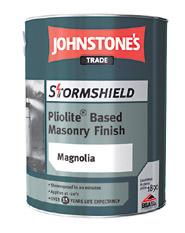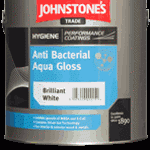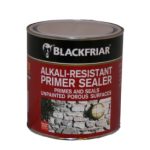When deciding to paint a new external render, it is difficult for people to decide which high quality branded paint to use on the render as there is a confusing choice of paints e.g. the Dulux weathershield smooth masonry paint or the Dulux Weathershield Waterseal.
Dulux Weathershield Waterseal is a silicone based product that isn’t recommended as the paint itself will provide a ‘seal’ on its own. The Dulux weathershield isn’t recommended either for painting render because it easily dries up and doesnt cover very well especially with the white colour variant.
Around the time of year when it is March in the UK, a Johnstone’s Pliolite Based Masonry Paint is recommended as it is waterproof (shower proof in about 20 mins) so if for some reason the weather around the construction site changes suddenly from sunny and dry to wet and cloudy, it can be assured that the oil based paint is intact along with the render underneath it (see Fig. 1). It also has a good durability and finish. Pliolite is also self sealing so all that was required was to thin/ dilute the first coat by 15% using white spirit. Oil based pliolite is applied as a thin first coat on new render with about 20-25% white spirit. Due to pliolite being self sealing, it won’t require a primer or stabiliser. Note: if a water based pliolite is used, it is found that a stabiliser isn’t required either unless the render is powdery. To get a good finish with Pliolite on the render, a roller is advised as it will give you a better finsih and will be quicker, helping the contractor to avoid overlaps and fat edges. All you normally need to do is brush down the wall with a stiff broom to get rid of any loose particles.
Fig.1:

Other than oil based paints to use, there are also some water based masonry paints which give 15 years guarantee protection provided its applied on a new rendered surface and instructions are followed to the letter e.g. Johnstone’s Aqua Water Based Gloss product (see Fig.2). However, one disadvantage of water based paints are that it is not able to dry rapidly in comparison to an oil based paint should the weather change suddenly from dry and sunny to wet and cloudy.
Fig.2:

An alkali-resisting primer (Fig.3) is a primer mainly used when a finishing coat such as an ordinary oil based paint is painted over the new rendering to prevent the alkali in the surface from chemically reacting with the oil molecules in the paint causing saponification i.e. the formation of sticky brown, soap like substance which consists of carboxylic acid salts.
Fig.3
